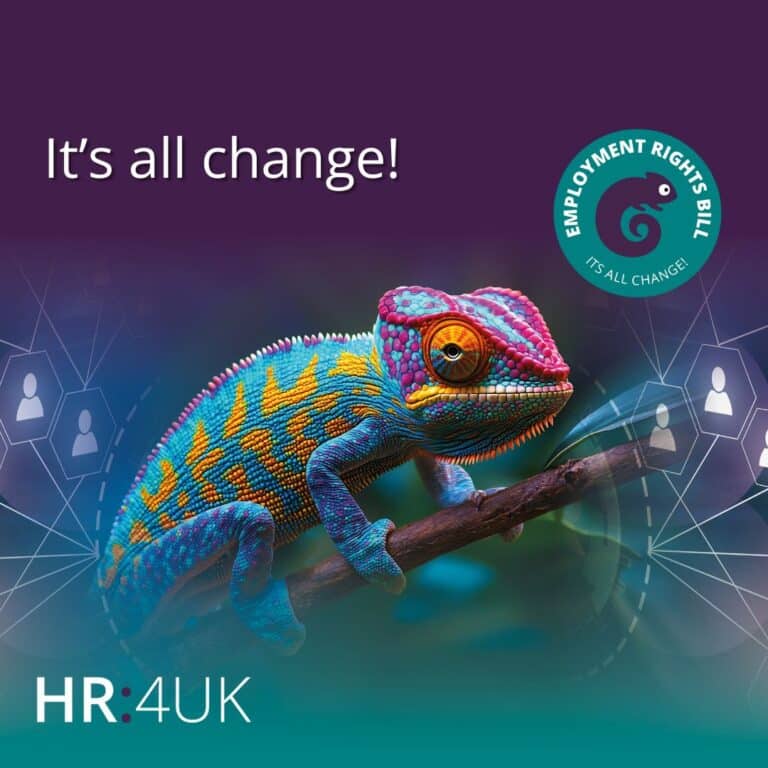TUPE: What to Know When Buying, Selling or Restructuring

With more businesses joining forces, outsourcing services, or restructuring to remain competitive, it’s no surprise that here at HR:4UK we have seen an increase in clients seeking support through TUPE transfers. Whether you are selling a business, taking one on, or moving services in or out, TUPE can be a legal minefield—especially when people, contracts, and workplace culture are all in the mix.
In this edition of Ask the Expert, I sat down with Paula, one of our HR Consultants to talk about the Transfer of Undertakings (Protection of Employment) Regulations—commonly known as TUPE—and what employers should know when facing a restructure.
With that in mind, we explored the key questions both transferors and transferees should be asking during a TUPE-related restructure…
Let’s start with the basics – Paula, what exactly is TUPE, and what does it mean for employers?
Paula: TUPE stands for the Transfer of Undertakings (Protection of Employment) Regulations 2006. It’s a set of UK employment laws designed to protect employees when the business they work for changes hands.
In simple terms, when a business (or part of a business) is sold, outsourced, or transferred to a new owner, TUPE ensures that the employees involved don’t lose their jobs or suffer worse terms and conditions just because of that transfer. Their employment contracts transfer across to the new employer automatically, with their continuity of service preserved.
For employers, TUPE can create significant legal obligations and risks—especially if the transfer may involve redundancies, changing roles, or attempts to harmonise terms. It’s essential to understand when TUPE applies, how to consult properly, and how to support staff through the change.
Am I right in saying that TUPE isn’t just for business sales?
Paula: Yes—it can apply in many scenarios. For example:
- Internal reorganisations within a group of companies, such as centralising departments across subsidiaries;
- Mergers where two businesses combine into a new entity;
- Service provision changes, like outsourcing payroll or cleaning services—or bringing them back in-house.
- Selling part of a business, so transferring ownership of just a certain segment/division rather than the whole company.
Even if there’s no sale of shares involved, TUPE may still apply if the business or service continues in a recognisable form. Every case is fact-specific, so it’s important to get advice early.
What do outgoing employers (transferors) need to provide to the new employer?
Paula: By law, transferors must provide what’s known as Employee Liability Information (ELI) no later than 28 days before the transfer. This includes things like employees’ names, ages, terms and conditions, disciplinary records, and any legal claims.
In practice though, transferees often want more detail—like current grievances, performance concerns, etc. While you’re not legally required to go beyond the minimum, sharing information openly (within data protection limits) helps build trust and avoids surprises post-transfer.
Do transferors need to tell staff about the transfer?
Paula: Yes—and this catches a lot of businesses out. The responsibility to inform and consult lies with the outgoing employer. That means even if it’s the transferee who plans to change roles, locations, or working practices, it’s still the transferor who must tell the employees about those proposed changes and provide pertinent details in advance as part of the consultation process.
That’s why it’s good practice for transferees to share their plans early so this consultation can be meaningful. Joint consultation meetings (both transferor and transferee meeting with the transferring employees) can work really well in these cases as this allows the transferee to speak directly with staff, explain what the transfer means in real terms, and start building a positive relationship even before the transfer date.
Can a transferor stop key employees from transferring over?
Paula: Potentially, but it must be done carefully. If you have employees you want to retain, you need to ensure they’re not assigned to the part of the business being transferred. That might involve moving them to another part of your organisation—provided it’s a genuine change, not a workaround to avoid TUPE.
Be aware of any restrictions in your commercial agreement, and make sure any changes are lawful, reasonable, and documented.
What about redundancies before the transfer—can these be made?
Paula: Yes, but there’s a caveat. You must show the redundancy decision was based on your own economic, technical or organisational (ETO) reasons—not the transferee’s. If you’re considering entering into an agreement to handle redundancies pre-transfer, you should secure an indemnity from the transferee and consider a three-party settlement agreement between you, the transferee, and the affected employee.
How should employers handle staff who are staying behind but are still affected?
Paula: Great question. Often the focus is on the transferring staff, but the “survivors” can face stress, uncertainty, or increased workloads. Clear communication, role clarity, and wellbeing support are essential. If roles are changing internally, provide appropriate training and reassurance to maintain morale and engagement.
From the transferee’s side, what due diligence should be carried out before a TUPE transfer?
Paula: Go deeper than the legal minimum. Ask for information on things like absence levels, any commitments or promises that may have been made and you should be aware of, pre-booked holidays, live disciplinary cases, or any likely tribunal claims. Make sure your commercial contract gives you the right to receive that information early—and if risks are identified, negotiate indemnities to protect your business post-transfer.
Should transferees take part in the consultation process?
Paula: While the legal duty sits with the transferor, it’s a smart move for transferees to attend consultation meetings too where the transferor agrees. It gives transferring staff a chance to meet their new employer, understand what’s changing, and raise concerns. That human element can make a big difference in how smoothly the transfer goes.
Can incoming employers harmonise terms and conditions post-transfer?
Paula: This is one of the most misunderstood areas. TUPE protects employees’ terms and conditions—so changing them to match terms within the transferee’s existing business, even for positive reasons, can be risky. You can only make changes if there’s an ETO reason and the employee agrees. Even then, case law shows that employees can sometimes “cherry-pick”—accepting the good changes and rejecting the bad.
If harmonisation is the goal, consider doing it through promotion, or new role—not linked directly to the transfer.
If redundancies are needed post-transfer, how should transferees approach selection?
Paula: Fairly. In most cases, you’ll need to pool transferring and existing employees and apply objective selection criteria. That can be difficult if you don’t know the new employees well. One solution is to use interviews or testing as part of the selection process.
Do transferees need to consult with their existing staff too?
Paula: Yes, and in many cases, it’s not just good practice—it’s a legal requirement. Under TUPE, transferees must inform—and where appropriate, consult with—any employees who may be affected by the transfer. That includes their existing staff, not just those transferring in.
For example, if your current team will experience changes to reporting lines, duties, workloads, or working practices as a result of the incoming employees, they are considered “affected employees” under the regulations. You must inform them or their representatives about the transfer and any planned measures—and consult with them if those measures could impact their roles.
Beyond the legal duty, it just makes sense. Keeping your existing staff informed helps prevent misunderstandings, resentment, or cultural clashes. Open communication helps both teams integrate more smoothly and sets the tone for a positive working culture. When your existing team understands the reasons behind the transfer and feels involved in the process, they’re far more likely to support and welcome their new colleagues—which makes all the difference in how the transition plays out.
What are the risks for employers if they get TUPE wrong?
Paula: The risks can be significant—both legally and financially. If an employer fails to comply with TUPE properly, they could face:
- Automatic Unfair Dismissal Claims: If an employee is dismissed because of the transfer itself (rather than for an economic, technical, or organisational reason), it’s likely to be automatically unfair. Compensation can be substantial—up to a year’s salary per employee in some cases.
- Protective Awards: If the employer fails to inform and consult with affected employees (or their representatives), they could face a protective award of up to 13 weeks’ gross pay per employee.
- Breach of Contract or Unlawful Deduction Claims: Changing terms and conditions unlawfully—even with good intentions—can lead to breach of contract claims or claims for unlawful deductions from wages.
- Loss of Key Staff or Morale: Poor communication or handling can lead to confusion, anxiety, and resignations—especially if staff feel kept in the dark or poorly treated. That can damage productivity, culture, and your employer brand.
- Disruption to Operations: TUPE isn’t just a legal process—it affects real people. If transfers are mismanaged, it can cause disruption, reduced service delivery, and operational delays.
TUPE isn’t something employers can afford to get wrong. A well-managed process not only keeps you compliant, but also protects your people, your reputation, and your business from costly mistakes.
That’s quite sobering!
Some great insights here, Paula, if you had to leave employers with one final thought about TUPE, what would it be?
That’s a good question! TUPE transfers are complex—but with the right advice, early planning, and clear communication, they don’t have to be chaotic. Whether you’re the seller or the buyer, the key is to treat the process as both a legal requirement and a people process.
At HR:4UK, we’re here to support you through every stage—from due diligence and consultation to integration and aftercare. If you’re restructuring or acquiring a new business, talk to us first.
Paula Hart
Paula is our longest serving employee, with over 20 years’ service, and has more than earned her exceptional reputation for supporting our clients in all employment matters.




